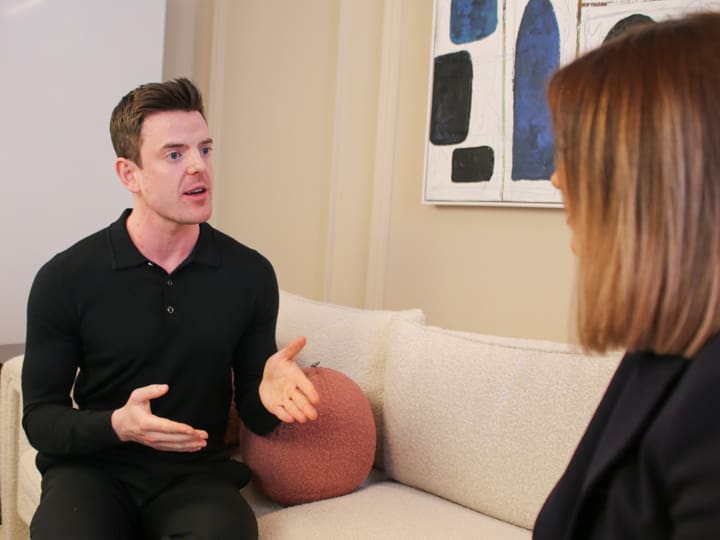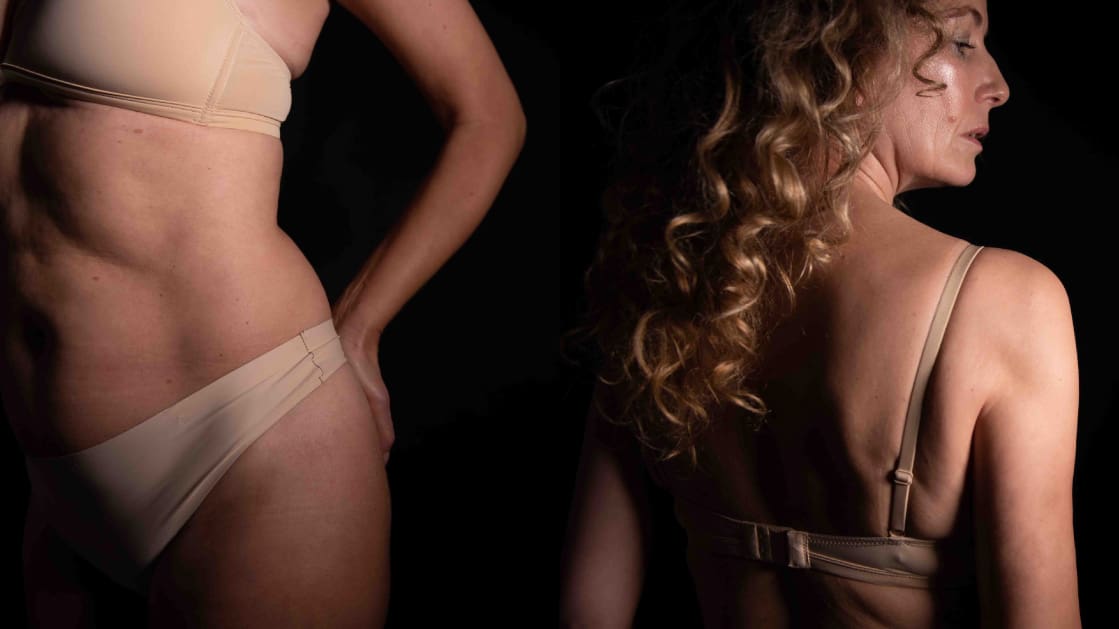McKeown Medical
167 Bath Street, Glasgow, G2 4SQ
Date posted — 24.04.25

Being diagnosed with fibroids can feel overwhelming. You may have noticed changes in your body, such as unusual bleeding, bloating, or pelvic pain, and suddenly you’re facing medical terms and treatment options you don’t fully understand.
At McKeown Medical, we believe in helping you make sense of it all with clear, expert-led information and compassionate care. In this article, we’ll answer some of the most frequently asked questions about fibroids to help you feel more informed and confident about your next steps.
Fibroids (also called uterine fibroids or leiomyomas) are non-cancerous growths that develop in or around the uterus. They vary in size, from as small as a seed to as large as a melon, and can appear as a single growth or in clusters.
Fibroids are incredibly common. It’s estimated that around 2 in 3 women will develop at least one fibroid during their lifetime. They typically affect people in their 30s and 40s, but can occur at any age.
Many fibroids don’t cause any symptoms and are only discovered during routine scans or examinations. However, others can lead to significant discomfort and disruption in daily life.
The symptoms of fibroids depend on their size, number, and location within the uterus. Some of the most common include:
Not everyone with fibroids experiences symptoms, but if you’re noticing any of the above, it’s worth seeking medical advice. At McKeown Medical, our expert team can help you get the answers you need through an initial consultation.
Fibroids don’t cause weight gain directly, but they can lead to abdominal bloating or a noticeable bulge in the lower stomach. This is especially true when fibroids are large or numerous. For some, this change can mimic the appearance of weight gain even if body fat hasn’t increased.
No, fibroids are not cancerous. They are benign tumours, meaning they do not spread to other parts of the body. In extremely rare cases, a cancerous growth called a leiomyosarcoma can develop in the uterus, but this is not thought to arise from a fibroid.
Importantly, having fibroids does not increase your risk of uterine cancer.
If you experience symptoms such as soaking through sanitary products frequently, feeling unusually fatigued, or suffering from shortness of breath during your period, it may be time to consult a healthcare professional. Early intervention can help prevent complications and improve your quality of life.
Still, it’s vital to monitor any changes in your symptoms and undergo regular checkups—especially if you’re postmenopausal or experiencing unusual bleeding.
The exact cause of fibroids isn’t fully understood, but several factors are known to play a role:
Fibroids can grow slowly or rapidly, or they may remain the same size for years.
At McKeown Medical, we offer a range of evidence-based treatments tailored to your symptoms, lifestyle, and personal preferences. These include:
Medication
Minimally invasive surgery
Hysterectomy
We understand that every woman’s situation is unique, which is why we take a personalised approach to treatment planning.
Fibroids are common, but they don’t have to be confusing or debilitating. With the right care, they can be managed or removed effectively, giving you back control over your health and quality of life.
At McKeown Medical, our gynaecology service is led by Dr Iain Martin, a highly experienced consultant specialising in the diagnosis and treatment of fibroids. Whether you’re newly diagnosed or considering your treatment options, we’re here to help you find the path that’s right for you.
Book a consultation to speak with one of our experts and explore your treatment options today.
Best in the business without a shadow of a doubt. Over 10 years I have been a client, never once had an issue with my treatments. High standards/practice speaks volumes.
Charlene DouganMay 2024

Fine lines etched into the skin around the mouth - this is a common problem and in this patient`s case she had what we call ‘actinic elastosis’, whereby abnormal bands of elastin build up in the skin as a result of years of previous sun exposure.
When patients have this condition, the gold standard way of dealing with it is fully ablative laser resurfacing. It’s an intense treatment with two weeks of downtime afterwards, but the results are spectacular - just like in this lovely patient.
The after photo is three weeks after the treatment and you can see that the skin is still a little pink, which will continue to fade over the next few months.
The patient is already delighted with the result - what do you think?

It’s beginning to look a lot like Christmas!
At least according to Michael Buble, who’s been on repeat in the clinic this week. The decorations are up and we are officially in ‘our season’. The clinic has been packed with everyone having their skin polished in time to make it on the nice list. If you’ve still to make a pre-Christmas appointment, we’ve still got some spaces left for your festive glow up.
Ho ho ho everyone… It’s time for Santa!!!! 🎅🏻

Ok, so this is the one we’ve all been waiting for. Sofwave : the results, in our hands!!!
This is the first patient we treated with @sofwave.uk when we were assessing the machine and deciding whether or not to buy it. These are the patient`s own photos that she kept throughout the healing journey.
Now do you see why we are so excited?! 🤩
#sofwave
#sofwavemed
#SUPERB
#sofwavemedical
#sofwavejourney
#sofwaveexperience

We are now well up and running with @sofwave.uk , much to the excitement of the whole team in the clinic (we are all queuing up to get a shot!)
This is a little video of the treatment being performed, so you can see what the process is like and there is even a little early preview of the results at the end.
One of the best parts is that there is no downtime, so we can still fit it in before Christmas without worrying about redness in the party season!
What do you think?
#sofwave
#sofwavemed
#SUPERB
#sofwavemedical
#sofwavejourney
#sofwaveexperience

We`re absolutely delighted to introduce you to our lovely new doctor, Dr Sharon.
With over 30 years’ experience as a medical doctor and a decade specialising in aesthetic medicine, Dr Sharon brings exceptional skill, warmth and a deeply patient-centred approach to every treatment.
She joins us with extensive expertise in injectables, including advanced toxin and filler techniques, and will also be leading our regenerative aesthetics offering with Ameela polynucleotides and Ameela Exosomes - two of the most exciting developments in skin rejuvenation. She will also be offering Profhilo and Profhilo Structura!

We have a super exciting new addition to the clinic this week, with the launch of @sofwavemed.
Sofwave is an incredible skin tightening technology that has been around for five years now. I am never first to the queue with new devices because so many don’t deliver and disappear within a couple of years of launch. Sofwave however has continued to grow in popularity over the years and earlier this year I decided I had to find out what all the fuss was about.
I asked the reps to bring it round for us to play with and we treated a few of our patients to see what the results were like and, three months later not only was I signing the purchase order I was asking how quickly I could get one of the reps round to treat me 😊
Sofwave works using ultrasound waves to create a thermal injury to the deeper layers of the skin, initiating a healing response which over a period of several months results in a skin tightening effect.
I have trialled a number of ultrasound devices in the past and have never bought any of them because I was always disappointed in the results. There are a couple of things that I think makes Sofwave different.
First, it only goes to 1.5mm which means all of the energy is being delivered to the skin. Most other devices go down to 3 or 4mm, by which point you are past the skin and into the fat which can, if anything, have a worsening effect on volume loss. The second difference that I think is important is that it treats a bigger proportion of the surface area of the skin.
We have a new page on our website where you can read all about Sofwave and how it works, but for now, enjoy some of these before and afters that the manufacture supplied.
Let me know what you think!

Lower eyelid surgery is one of the more challenging operations in aesthetic practice. If we can avoid it, we normally try to help our patients chose non-surgical paths using laser or fillers.
However, there are some situations where it can’t be avoided, especially when there is excess fat under the eye causing puffiness. This is exactly what this patient had and so the very talented @bramhallplasticsurgery performed an upper and lower blepharoplasty for him. Whilst we often do the upper eyelids without doing the lower eyelids, usually when we do the lower eyelids we always need to do the uppers too.
This patient is now a couple of months out from surgery and loving his result. What do you think?

Laser season continues!
Thank you to this lovely patient who has kindly allowed us to share her results. She was particularly concerned about the fine lines and creases around her mouth, and underwent full-field laser resurfacing to target the deeper layers of the skin.
This is just two months after treatment and you can already see a significant improvement in the fine lines and overall skin texture. She’s still a little red and got some more healing to do, but she is already very happy with the improvement. This patient was a bit anxious about having the treatment done, so chose to have it under sedation which means she slept throughout and woke up when it was over!
What do you think?

It’s been six months since we launched the new toxin Relfydess in the clinic so, how is it going?
We’ve undertaken a survey of all of the patients we treated with the new toxin in the first month, who are now around six months since their first treatment, to find out more about what they thought of the results over the longer term - whether it kicked in faster, whether it looked better and whether they felt it lasted longer than the previous toxin.
Here are the results, and the feedback so far is really encouraging with the majority of patients reporting that it kicked in faster, looked better and lasted longer.
If you’d like to see more detail and analysis of these results, check out the link to the blog post in our profile.
